Elektrėnai is one of the youngest cities in Lithuania, located halfway between Vilnius and Kaunas. It was founded in the 1960s, after the construction of a thermal power plant began in the countryside. In 2000, when the Elektrėnai Municipality was established, Elektrėnai became the centre of the municipality, with an area of 2 365 hectares. Elektrėnai is situated next to the lagoon of the same name. After the damming of the river Strėva, the river water started to rise on 12 September 1961. Lakes Anykšta, Jagudis and Puikinas merged into a huge pond called the Elektrėnai Lagoon. It dammed up 10 villages. The reservoir has dozens of islands and bays. It is a favourite place for active recreation of residents and visitors. In 1976, the Ice Palace was established in Elektrėnai - the first artificial ice rink in Lithuania. In 1996, the Catholic Church of St. The Church of the Martyrs' Queen of the Virgin Mary was built in Elektrėnai. The main facade of the sanctuary features a portal with an original architectural design consisting of a high arch and six doubled crosses: this composition symbolises the seventh century of Christianity in Lithuania. The interior apse features a sculpture of the Risen Christ by Stanislovas Kuzma. Stanislav Kuzmas, the artist, is the patron saint of the Church of St. John the Baptist in Elektrėnai. The Youth Sakura Park was established at the Church of the Queen of Martyrs of the Virgin Mary. The inhabitants of the town have the opportunity to actively recreate in various areas of the town. The central square and its accesses have been reconstructed and the square on Runga Street in Elektrėnai has been renovated with a sculpture created by the youth of Elektrėnai Municipality with symbols of the city that are no longer present in Elektrėnai or will not be present in the near future. The former amusement park has been landscaped, a pontoon pier with lighting has been built on the shore of the Elektrėnai Lagoon, the shoreline accesses have been landscaped, multifunctional active leisure and children's playgrounds have been built, and pedestrian and cycle paths have been renovated.
Elektrėnai is one of the youngest cities in Lithuania, located halfway between Vilnius and Kaunas. It was founded in the 1960s after the construction of a thermal power plant, which began in the countryside. In 2000, when the Elektrėnai Municipality was established, Elektrėnai became the centre of the municipality, with an area of 2 365 hectares. Elektrėnai is situated next to the lagoon of the same name. After the damming of the river Strėva, the river water started to rise on 12 September 1961. Lakes Anykšta, Jagudis and Puikinas merged into a huge pond called the Elektrėnai Lagoon, which dammed up 10 villages. The reservoir has dozens of islands and bays and is a favourite place for active recreation of residents and visitors. In 1976, the Ice Palace was established in Elektrėnai - the first artificial ice rink in Lithuania. In 1996, the Catholic Church of St. The Church of the Martyrs' Queen of the Virgin Mary was built in Elektrėnai. The main facade of the sanctuary features a portal with an original architectural design consisting of a high arch and six doubled crosses, this composition symbolises the seventh century of Christianity in Lithuania. The interior apse features a sculpture of the Risen Christ by Stanislovas Kuzma. Stanislav Kuzmas, the artist, is the patron saint of the Church of St. John the Baptist in Elektrėnai. The Youth Sakura Park was established at the Church of the Queen of Martyrs of the Virgin Mary. The inhabitants of the town have many leisure opportunities in various areas of the town. The central square and its accesses have been reconstructed and the square on Runga Street in Elektrėnai has been renovated with a sculpture created by the youth of Elektrėnai Municipality with symbols of the city that are no longer present in Elektrėnai, or will not be present in the near future. The former amusement park has been landscaped, a pontoon pier with lighting has been built on the shore of the Elektrėnai Lagoon, the shoreline accesses have been landscaped, multifunctional active leisure and children's playgrounds have been built, and pedestrian and cycle paths have been renovated.
Elektrėnai is situated near a lagoon of the same name. When the Strėva was dammed, the water level in the river started rising on September 12, 1961. Lakes Anykšta, Jagudis and Puikinas formed one large lagoon called Elektrėnai Lagoon. The latter flooded the Villages of Kakliniškės, Perkūnakiemis, Šarkinė, Anykšta, Raistinė, Lekavičiai, Mažiklė, Petravičiai, Alinka and Runga. The lagoon is known to have dozens of islands and gulfs.
The length of the lagoon is 11 km and its width is 3 km. The deepest spot of the lagoon reaches as far down as 31 m. This is the favorite resting spot of Elektrėnai residents. In the summer, the locals and the guests of the city enjoy sailing on boats, riding jet skis and engaging in other water sports. In 1976, Elektrėnai Ice Palace, the first artificial ice rink in Lithuania, was built. Many locals come to the ice rink to enjoy winter sports and ice hockey players train here for competitions. The Ice Palace holds international ice hockey competitions, dance sport competitions and city festivals. Such famous ice hockey players as Dainius Zubrus and Darius Kasparaitis started their professional career here at this ice rink. Elektrėnai Ice Palace underwent renovations in 2012.
Elektrėnai Church of Virgin Mary the Queen of Martyrs was constructed in 1996. The façade of the church is known for its portal of original architectural solutions as it boasts a high arch and six double crosses. This composition is a symbol of the seventh centenary of the Christianization of Lithuania. The interior apse is decorated with the sculpture of the Resurrected Christ made by S. Kuzma. The church holds repentance nights and religious music concerts.
The locals can visit the gyms, pool and cultural center. The main square of the city and its side streets have been renovated, the pedestrian and biking trails have been reconstructed. Elektrėnai Lagoon has a floating wharf with good lighting. The surroundings of the lagoon are in good order and multifunctional active leisure and children’s playgrounds have been established.
Photo author Gabrielius Lisauskas, Titas Pacauskas, Jūratė Levickienė, Liudmila Felčinskaja, Nikolajus Nikiforovas


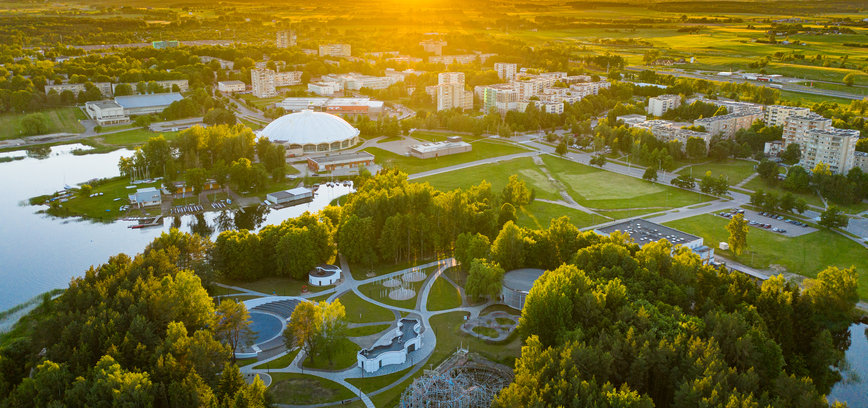
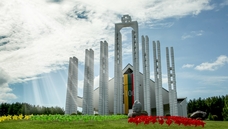
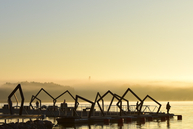
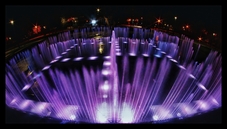
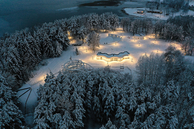
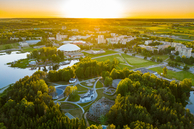
Reviews